Sabah |
|
|
|
| Übersicht – Contents: | |
Sabah |
|
|
|
| Übersicht – Contents: | |
Flaggen – Flags: |
|
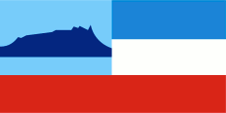 |
Flagge von Sabah – flag of Sabah, Seitenverhältnis – ratio = 1:2, Quelle/Source, nach/by: Wikipedia (EN) |
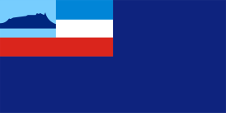 |
Dienstflagge zur See – official flag at sea, Seitenverhältnis – ratio = 1:2, Quelle/Source, nach/by: Flags of the World |
historische Flaggen – historical Flags: |
|
 |
bis/to 1892, Flagge von Brunei – flag of Brunei, Seitenverhältnis – ratio = 1:2, Quelle/Source nach/by: Flags of the World |
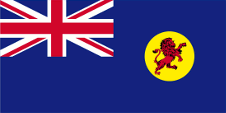 |
1892–1903, Flagge der Regierung (Staatsflagge) – flag of the government (state flag), Seitenverhältnis – ratio = 1:2, Quelle/Source, nach/by: Flags of the World |
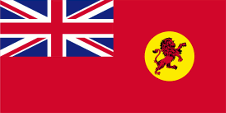 |
1892–1903, Handelsflagge – merchant flag, Seitenverhältnis – ratio = 1:2, Quelle/Source, nach/by: Flags of the World |
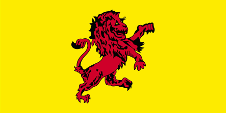 |
1892–1903, Flagge des Gouverneurs – flag of the governor, Gösch – naval jack, Seitenverhältnis – ratio = 1:2, Quelle/Source, nach/by: Flags of the World |
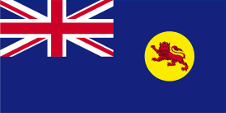 |
1903–1942, 1945–1948, Flagge der Regierung (Staatsflagge) – flag of the government (state flag), Seitenverhältnis – ratio = 1:2, Quelle/Source, nach/by: Flags of the World |
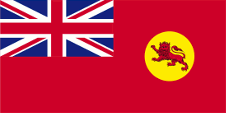 |
1903–1942, 1945–1948, Handelsflagge – merchant flag, Seitenverhältnis – ratio = 1:2, Quelle/Source, nach/by: Flags of the World |
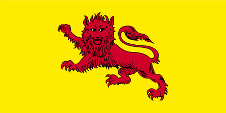 |
1903–1915, Flagge des Gouverneurs – flag of the governor, Gösch – naval jack, Seitenverhältnis – ratio = 1:2, Quelle/Source, nach/by: Flags of the World |
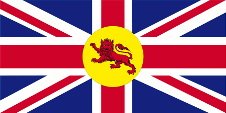 |
1915–1942, Flagge des Gouverneurs – flag of the Governor, Seitenverhältnis – ratio = 1:2, Quelle/Source, nach/by: Flaggenbuch 1939 |
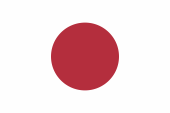 |
1942–1945, Flagge Japans – flag of Japan, Seitenverhältnis – ratio = 2:3, Quelle/Source, nach/by: Wikipedia (EN)   |
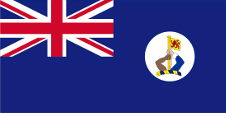 |
1948–1963, Flagge der Regierung (Staatsflagge) – flag of the government (state flag), Seitenverhältnis – ratio = 1:2, Quelle/Source, nach/by: Wikipedia (EN) |
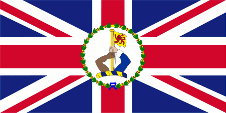 |
1948–1963, Flagge des Gouverneurs – flag of the Governor, Seitenverhältnis – ratio = 1:2, Quelle/Source, nach/by: Flags of the World |
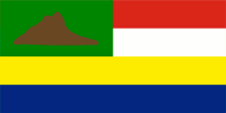 |
1963–1981, Flagge von Sabah – flag of Sabah, Seitenverhältnis – ratio = 1:2, Quelle/Source, nach/by: Wikipedia (EN) |
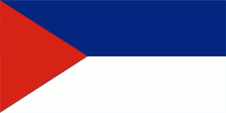 |
1982–1988, Flagge von Sabah – flag of Sabah, Seitenverhältnis – ratio = 1:2, Quelle/Source, nach/by: Wikipedia (EN) |
Bedeutung/Ursprung der Flagge – Meaning/Origin of the Flag: |
|
|
Die heutige Flagge von Sabah wurde 1988 eingeführt. Sie zeigt in drei
horizontalen Streifen die Farben Blau, Weiß und Rot, also die Farben der
Flagge Malaysias. Das soll wohl ein Bekenntnis Sabahs zur Föderation sein. In der hellblauen Oberecke die dunkelblaue Silhouette des Berges Kinabalu, mit 4.101 m der höchste Berg Südostasiens. Die Flagge zeigt drei(!) Blautöne, Königsblau (die Abbildung des Berges Kinabalu), Eisblau (der Hintergrund in der Oberecke) und Zirkonblau (der obere der drei Streifen der Flagge). Das Königsblau steht für Stärke und Zusammenhalt, das Eisblau für Einheit und Wohlstand und das Zirkonblau für Frieden. Die Farbe Weiß repräsentiert Reinheit und Gerechtigkeit. |
The today's flag of Sabah was introduced in 1988. It shows in three horizontal stripes the colours blue, white and red, the colours of the flag of Malaysia. This should indeed be a confession of Sabah to the federation. In the pale blue upper staff quadrant the dark blue silhouette of the Kinabalu Mountain, with 4.101 m the highest mountain of Southeast Asia. The flag shows three(!) shades of blue, royal blue (the image of Mount Kinabalu), ice blue (the background in the upper corner) and zircon blue (the upper of the flag's three stripes). The royal blue represents strength and coherence, the ice blue represents unity and prosperity and the zircon blue represents peace. The colour white stands for purity and justice. |
| Im Jahre 1881 begann die Britische Nordborneo Kompanie mit der Kolonisierung des Landes. Sie war dazu von der britischen Krone mit umfangreichen Hoheitsrechten ausgestattet worden. Die Kolonie verwendete ab 1892 die übliche blaue Dienstflagge (Blue Ensign) und auch die übliche rote Handelsflagge (Red Ensign). Im wehenden Teil der Flaggen war, wie bei allen anderen britischen Kolonien, das Badge (Abzeichen) zu sehen, in Nordborneo das Badge der Kompanie, ein roter steigender Löwe auf einer goldenen Scheibe. Ab 1903 wurde der Löwe in die andere Richtung gedreht und wurde "leopardiert", d.h. er schaute den Betrachter an. | In 1881, the British Nordborneo Chartered Company began with the colonizing of the country. The company was endowed by the British Crown with extensive sovereign rights. The colony used from 1892 the usual blue official flag (blue ensign) and even the usual red merchant flag (red ensign). In the waving part of the flags, as on the flags of all other British colonies, the badge was visible. In North Borneo it was the badge of the company, a red rising lion ("lion rampant") on a golden disc. From 1903 the lion was turned in the other direction and it became "leopardized", what means that he looked in the direction of the viewer. |
| Die Verwüstungen und Schäden des Zweiten Weltkriegs führten zur Zahlungsunfähigkeit der Kompanie, die 1946 auf ihre Rechte verzichtete. Nordborneo wurde so eine britische Kronkolonie. In diesem Zusammenhang wurde 1948 ein neues Badge eingeführt, das einen Fahnenmast mit der alten Gouverneursflagge zeigt, der von zwei Armen gehalten wird, dem eines Europäers und dem eines Einheimischen. Die rote Handelsflagge war bereits mit dem Rückzug der Kompanie abgeschafft worden, und es wurde keine neue eingeführt. |
The devastations and damages of the Second World War caused the insolvency
of the company, which renounced its rights in 1946. North Borneo became in
this way a British crown colony.
On this occasion, a new badge was introduced in 1948, showing a flagpole with the old governor's flag held by two arms, one of an European and one of a native inhabitant. The red merchant flag (civil ensign, red ensign) was already abolished on the occasion of the withdrawal of the company, and no new one was introduced. |
| Nachdem Nordborneo als Sabah ein Bundesstaat Malaysias geworden war (1963), wurde eine Flagge eingeführt, die vier horizontale Streifen in Rot, Weiß, Gelb und Grün zeigte. Die Oberecke war grün und zeigte die Silhouette des Berges Kinabalu in Braun. | After North Borneo became as Sabah a federal state of Malaysia (1963) was introduced a flag which showed four horizontal stripes in red, white, yellow and green. The upper staff quadrant was green and showed the silhouette of Kinabalu Mountain in brown. |
| Im Jahre 1982 wurde eine Flagge eingeführt, die derjenigen von Sarawak sehr ähnlich sah, jedoch mit getauschten Farben: Sie zeigte zwei Streifen in Blau und Weiß und am Liek ein gleichschenkliges rotes Dreieck. Sabah und Sarawak haben im Jahre 1988 beide neue (bis heute gültige) Flaggen angenommen. |
In the year 1982 was introduced a flag which was very similar to those of
Sarawak, but with exchanged colours: It showed two stripes in blue and white and at the leech an isosceles red triangle. Sabah and Sarawak both adoped in 1988 new (until today used) flags. |
| Quelle/Source: Flaggen Enzyklopädie, Flags of the World, Die Welt der Flaggen, Volker Preuß | |
Wappen – Coat of Arms: |
|
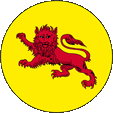 |
1903–1942, 1945–1948, Abzeichen von Britisch Nordborneo – badge of British North Borneo Quelle/Source, nach/by: Wikipedia (EN) |
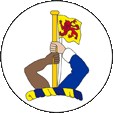 |
1948–1963, Abzeichen von Britisch Nordborneo – badge of British North Borneo Quelle/Source nach/by: Flags of the World |
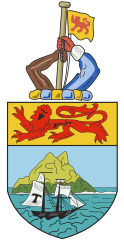 |
1948–1963, Wappen von Britisch Nordborneo – coat of arms of British North Borneo Quelle/Source nach/by: British Government, redraw by Samhanin [Public domain, Public domain or CC BY 3.0 ], from Wikimedia Commons |
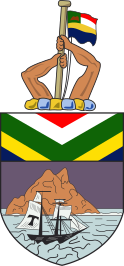 |
1963–1982, Wappen von Sabah – coat of arms of Sabah Quelle/Source nach/by: Samhanin [CC0], from Wikimedia Commons |
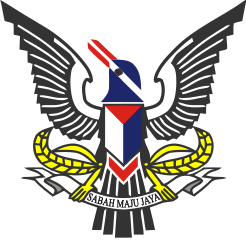 |
1982–1988, Wappen von Sabah – coat of arms of Sabah Quelle/Source nach/by: Ranking Update [Public domain], from Wikimedia Commons |
 |
seit/since 1988, Wappen von Sabah – coat of arms of Sabah Quelle/Source nach/by: Ranking Update [Public domain or Public domain], via Wikimedia Commons |
Bedeutung/Ursprung des Wappens – Meaning/Origin of the Coat of Arms: |
|
| Für die Heraldik des Landes war die Symbolik der Britischen Nordborneo Kompanie prägend. Deren Wappen zeigte eine Uferlandschaft mit einem Schiff im Vordergrund und im Schildhaupt einen roten scheitenden Löwen auf goldenem Grund, der links und rechts von je einem Einheimischen gehalten wird. Oberhalb des Schildes war als Helmkleinod eine Wulst platziert, in deren Mitte ein Fahnenmast stand, der von zwei Armen gehalten wird, dem eines Europäers und dem eines Einheimischen. Am Fahnemast wehte eine gelbe Flagge mit dem roten Löwen darin. Diese Flagge erinnert daran, dass das Land dem Sultan von Brunei abgekauft wurde, dessen Farbe Gelb war und ist. Unterhalb gab es ein Spruchband mit dem Motto der Kompanie. "pergo et perago", was übersetzt heißt: "Ich unternehme und ich erreiche". Diese Symbolik wurde beibehalten, auch nachdem die Kolonie 1946 zur britischen Kronkolonie geworden war. Sogar nachdem das Land ein Teil Malaysias geworden war (1963) wurde bis 1981 ein ähnliches Wappen verwendet, lediglich der rote Löwe musste einem Muster aus lokalen Farben (die auch auf der damals gültigen Flagge erschienen) weichen. Zwischen 1981 und 1988 wurde ein stilisierter Vogel als Wappen verwendet, der die damalige Anordnung der Farben der Flagge als Schild auf der Brust trägt. In seinen Krallen hielt der Vogel ein Spruchband mit dem Motto: "Sabah Maju Jaya", was übersetzt heißt: "Lass Sabah gedeihen". Im 1888 eingeführten Wappen wurde dieses Motto beibehalten, nur erscheint es jetzt in weißer Schrift auf einem roten Spruchband unterhalb des Wappenschildes. Dieser zeigt auf hellblauem Grund die dunkelblaue Silhouette des Berges Kinabalu. Das Motiv erscheint auch in der Oberecke der heutigen Flagge des Landes. Auch die anderen Farben der Flagge erscheinen im Schildhaupt, jedoch im Sparrenschnitt. Das Helmkleinod ist noch immer das der Britischen Nordborneo Kompanie, jedoch zeigt die Flagge am Mast die heutige Flagge von Sabah. |
The symbolism of the British North Borneo Company was formative for the
country's heraldry. Its coat of arms showed a shore landscape with a ship in
the foreground and a red lion on a golden background in the head of the
shield, which was held by a native on the left and right. Above the shield,
a bead was placed as a helmet jewel, in the middle of which was a flagpole
held by two arms, that of a European and that of a native. On the flagpole flew a yellow flag with the red lion in it. This flag was a reminder that the land was bought from the Sultan of Brunei, whose colour was and is yellow. Below there was a banner with the motto of the company: "pergo et perago", which translates as "I undertake and I achieve". This symbolism was retained even after the colony became a British Crown Colony in 1946. Even after the country became part of Malaysia (1963), a similar coat of arms was used until 1981, only the red lion had to give way to a pattern of local colours (which also appeared on the flag which was used in this time). Between 1981 and 1988, a stylised bird was used as coat of arms, bearing the then arrangement of the colours of the flag as a shield on its breast. In its talons, the bird held a banner with the motto: "Sabah Maju Jaya", which translates as "Let Sabah prosper". In the coat of arms introduced in 1888, this motto was retained, only now it appears in white lettering on a red banner below the escutcheon. This shows the dark blue silhouette of Mount Kinabalu on a light blue background. The motif also appears in the upper corner of the country's present flag. The other colours of the flag also appear in the shield head, but in chevron style. The helmet decoration is still that of the British North Borneo Company, but the flag at the mast shows the present flag of Sabah. |
| Quelle/Source: Flags of the World, Volker Preuß | |
Landkarte – Map: |
|
| Die Bundesstaaten Malaysias – the Federal States of Malaysia: |
| interaktive Landkarte – interactive Map |
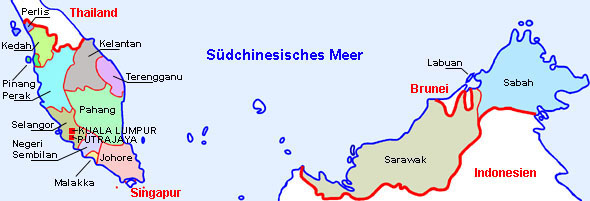 Landkarte/Map: Volker Preuß nach/to Malaysia? => hier klicken – click here |
Zahlen und Fakten – Numbers and Facts: |
|
|
|
|
|
|
|
|
|
|
|
|
|
|
|
|
|
|
|
Geschichte: |
|
14.–15.Jhd. · zum Reich Madjapahit,
später zum Sultanat
Brunei 1521 · Entdeckung durch Portugiesen 1881 · Beginn der britischen Kolonisierung durch die Britische Nordborneo Kompanie 1888 · das heutige Sabah wird britisches Protektorat → Britisch-Nordborneo 1937 · Verfassung, beschränkte Autonomie → Staat Nordborneo 1942 · japanische Eroberung 1945 · Abzug der Japaner 1946 · Nordborneo wird offiziell britische Kolonie 16.09.1963 · Proklamation des Königreiches Malaysia durch Zusammenschluss der Malaiischen Föderation (Malaya) mit den ehemaligen britischen Kolonien Sarawak, Sabah (Nordborneo) und Singapur. Brunei lehnte den Beitritt ab und verblieb bei Großbritannien |
History: |
| 14th–15th
cent. · to the Madjapahit Empire,
later to the Sultanate of
Brunei 1521 · discovery by Portugese 1881 · beginning of the British colonization by the British North Borneo Chartered Company 1888 · the today's Sabah becomes British protectorate → British North Borneo 1937 · constitution, limited autonomy → State of North Borneo 1942 · Japanese conquest 1945 · withdrawal of the Japanese 1946 · North Borneo becomes officially a British colony 16th of September 1963 · proclamation of the Kingdom of Malaysia by confederation of the Malaysian Federation (Malaya) with the former British colonies Sarawak, Sabah (North Borneo) and Singapore. Brunei rejects the joining and remains at United Kingdom |
| Quelle/Source: Atlas zur Geschichte, World Statesmen, Wikipedia (D) |
Ursprung des Landesnamens – Origin of the Country's Name: |
|
| Der Name des Landes "Sabah" kommt aus der Arabischen Sprache, was "Morgen" heißt. Das Land liegt im Osten von Malaysia, dort wo morgens die Sonne aufgeht. | The name of the country "Sabah" comes from the Arabic language, which means "morning". The country is located in the east of Malaysia, where the sun rises in the morning. |
| Quelle/Source: Wikipedia (DE) | |